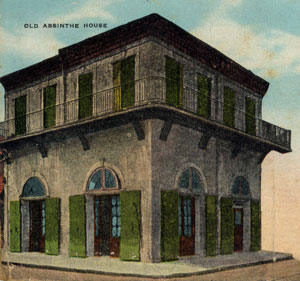Unnatural

If there is a blacker mark of shame on the history of American governance (the genocide of Native Americans and the enslavement of Africans notwithstanding), I am open to considering it. (Local so-called riots--Tulsa, Rosewood--don't qualify as they did not have federal government complicity.) The fact that all of America witnessed the disaster of Hurricane Katrina and the debacle of the aftermath seems not to have registered in the public consciousness. The recent anniversary reminds me that there are some useful, impressive books on the tragedy of New Orleans. In addition to Tom Piazza's excellent novel City of Refuge (which we regularly tout here at TMN), Piazza in a matter of a few months published Why New Orleans Matters (Harper), a compelling broadside arguing for the irreplaceable import of New Orleans and worrying about emotional climate in the Crescent City: "That spirit is in terrible jeopardy right now. If it dies, something precious and profound will go out of the world forever."
Cartoonist/illustrator Josh Neufeld chose to portray seven stories of multitudes in the pre- and post-Hurricane Katrina chaos in the graphic novel A.D.: New Orleans After the Deluge (Pantheon) and encapsulates the astonishing range of despair and glory that is to be found there. Neufeld observes:
A.D.
Founder of QbaDisc records, music historian, and musician Ned Sublette--whose "Cowboy Rumba" is one of my favorite records (imagine a meringue version of "Ghost Riders in the Sky")--was in New Orleans for Tulane University in 2004 and 2005, and as he writes, "We couldn't know we were scrutinizing, day by day, the last year the city would be whole." With The Year Before the Flood: A Story of New Orleans (Lawrence Hill), Sublette has created an aromatic bouillabaisse of history, personal testimony, memoir, analysis, and anecdote about what must be the most interesting city in the continental United States.
Amanda Boyden's Babylon Rolling (Pantheon) is set in New Orleans in the pre-Katrina summer of 2004, and puts the five diverse voices of neighbors on an uptown street at play against each other (the Mays of Minnesota, the Guptas of India, the elderly Browns, a teenager recently off juvenile incarceration, and Philomenia Beauregard de Bruges). Of the novel author Kate Christensen opines:
Boyden has a chameleon-like ability to inhabit any persona, of any race or age, so fully and seamlessly it's hard to remember that these people are invented rather than real. Pre-Katrina New Orleans leaps to life on every page, a beautiful, seamy, fragile city on the brink of chaos and ruin.
For his album The City That Care Forgot (429 Records), Mac Rebenak, aka Dr. John, adopts the name first coined in New Orleans city guide from the Federal Writers' Project--though no explanation for that title exists--for his homage to his native city and the destruction and tragedy wrought by Katrina and parties known and unknown. Eric Clapton sits in. Audio here and here. The good doctor is angry and he is sad. Which is the way it is.
When Spike Lee went to New Orleans to film his documentary When the Levees Broke: A Requiem in Four Acts, he encountered Phyllis Montana-Leblanc. He writes in the foreword to her book, Not Just the Levees Broke: My Story During and After Hurricane Katrina (Atria):
Levees
By the way, as Michael Grunwald wrote in the August 13, 2007, issue of Time, "The most important thing to remember about the drowning of New Orleans is that it wasn't a natural disaster."
